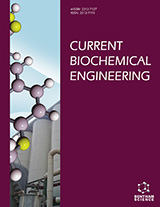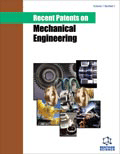Abstract
Background: Mustard oil, due to its high erucic acid content, should not be preferred as edible oil. Rather, fatty acids present in its triacylglycerol structure can be used in various fields. Structured lipids can also be formed from this oil and such compounds also have important applications, particularly in foods.
Methods: Processes like hydrolysis can lead to production of free fatty acids. Alcoholysis can lead to biodiesel. Transesterification can result in concentration of erucic acid in alkyl fatty acid ester fraction and 18-carbon fatty acids in combination of acetylacyl and acylglycerol fraction. Biocatalyst like lipase (enzyme) is a better alternative to chemical catalyst regarding product quality, moderate process conditions and product selectivity. Results: Studies of various research groups on lipase catalyzed processes leading to modification of mustard oil have been presented in a concise form in this review. Process variables like water content, time and additives like surfactants, salts and organic solvents affected the aforesaid processes. Statistical optimization of hydrolysis in the presence of surfactants sufficiently enhanced erucic acid concentration in free fatty acid fraction. Conclusion: The studies represented in this review work give detailed idea on different kinds of possible applications of products derived from mustard oil. Type of lipase, process conditions and additives necessary for best outcome can also be identified for each process from this review work.Keywords: Mustard oil, lipase, hydrolysis, transesterification, alcoholysis, fatty acids.
Graphical Abstract
Current Biochemical Engineering (Discontinued)
Title:Lipase Catalyzed Modification of Mustard Oil: A Review
Volume: 4 Issue: 2
Author(s): Debajyoti Goswami*
Affiliation:
- Department of Chemical Engineering, University College of Science and Technology, University of Calcutta, 92, A. P. C. Road, Kolkata-700009,India
Keywords: Mustard oil, lipase, hydrolysis, transesterification, alcoholysis, fatty acids.
Abstract: Background: Mustard oil, due to its high erucic acid content, should not be preferred as edible oil. Rather, fatty acids present in its triacylglycerol structure can be used in various fields. Structured lipids can also be formed from this oil and such compounds also have important applications, particularly in foods.
Methods: Processes like hydrolysis can lead to production of free fatty acids. Alcoholysis can lead to biodiesel. Transesterification can result in concentration of erucic acid in alkyl fatty acid ester fraction and 18-carbon fatty acids in combination of acetylacyl and acylglycerol fraction. Biocatalyst like lipase (enzyme) is a better alternative to chemical catalyst regarding product quality, moderate process conditions and product selectivity. Results: Studies of various research groups on lipase catalyzed processes leading to modification of mustard oil have been presented in a concise form in this review. Process variables like water content, time and additives like surfactants, salts and organic solvents affected the aforesaid processes. Statistical optimization of hydrolysis in the presence of surfactants sufficiently enhanced erucic acid concentration in free fatty acid fraction. Conclusion: The studies represented in this review work give detailed idea on different kinds of possible applications of products derived from mustard oil. Type of lipase, process conditions and additives necessary for best outcome can also be identified for each process from this review work.Export Options
About this article
Cite this article as:
Goswami Debajyoti *, Lipase Catalyzed Modification of Mustard Oil: A Review, Current Biochemical Engineering (Discontinued) 2017; 4 (2) . https://dx.doi.org/10.2174/2212711904666170606110242
| DOI https://dx.doi.org/10.2174/2212711904666170606110242 |
Print ISSN 2212-7119 |
| Publisher Name Bentham Science Publisher |
Online ISSN 2212-7127 |
 19
19Related Articles
-
The Involvement of Blood Coagulation Factor XIII in Fibrinolysis and Thrombosis
Cardiovascular & Hematological Agents in Medicinal Chemistry Graphical Abstracts
Letters in Drug Design & Discovery Membrane Transporters in Physiological Barriers of Pharmacological Importance
Current Pharmaceutical Design Targeting Injury-Related Synaptic Plasticity for the Treatment of Chronic Pain
Current Pharmaceutical Design Impaired Spatial Memory after Ketamine Administration in Chronic Low Doses
Current Neuropharmacology The Discovery and Potential of N-Sulfonylated Dipeptide VLA-4 Antagonists
Current Topics in Medicinal Chemistry Mechanisms of Action and Chemical-Biological Interactions Between Ozone and Body Compartments: A Critical Appraisal of the Different Administration Routes
Current Drug Therapy Editorial - The As and Ms of Alzheimers Disease
Current Alzheimer Research Epigenetic Basis of Neuronal and Synaptic Plasticity
Current Topics in Medicinal Chemistry Recent Insights into the Biosynthesis and Biological Activities of Natural Xanthones
Current Medicinal Chemistry Child and Adolescent Refugee Mental Health in Brazil: Literature Review and a Family Case Report
Adolescent Psychiatry Neuroprotective Effects of Lithium - Pointing out Protein Phosphatases as Drug Targets?
Current Medicinal Chemistry - Central Nervous System Agents “Bedside-to-Bench” Behavioral Outcomes in Animal Models of Pain: Beyond the Evaluation of Reflexes
Current Neuropharmacology Microglial Integrity is Maintained by Erythropoietin Through Integration of Akt and Its Substrates of lycogen Synthase Kinase-3β, β-Catenin, and Nuclear Factor-κB
Current Neurovascular Research Review of Patents on Microneedle Applicators
Recent Patents on Drug Delivery & Formulation The DREAM of Pain Relief
Current Rheumatology Reviews Interaction of Dehydrogenase Enzymes with Nanoparticles in Industrial and Medical Applications, and the Associated Challenges: A Mini-review
Mini-Reviews in Medicinal Chemistry The Quest to Repair the Damaged Spinal Cord
Recent Patents on CNS Drug Discovery (Discontinued) AMPA Receptor Antagonists: Potential Therapeutic Applications
Recent Patents on CNS Drug Discovery (Discontinued) Protein Interaction Studies for Understanding the Tremor Pathway in Parkinson’s Disease
CNS & Neurological Disorders - Drug Targets

















